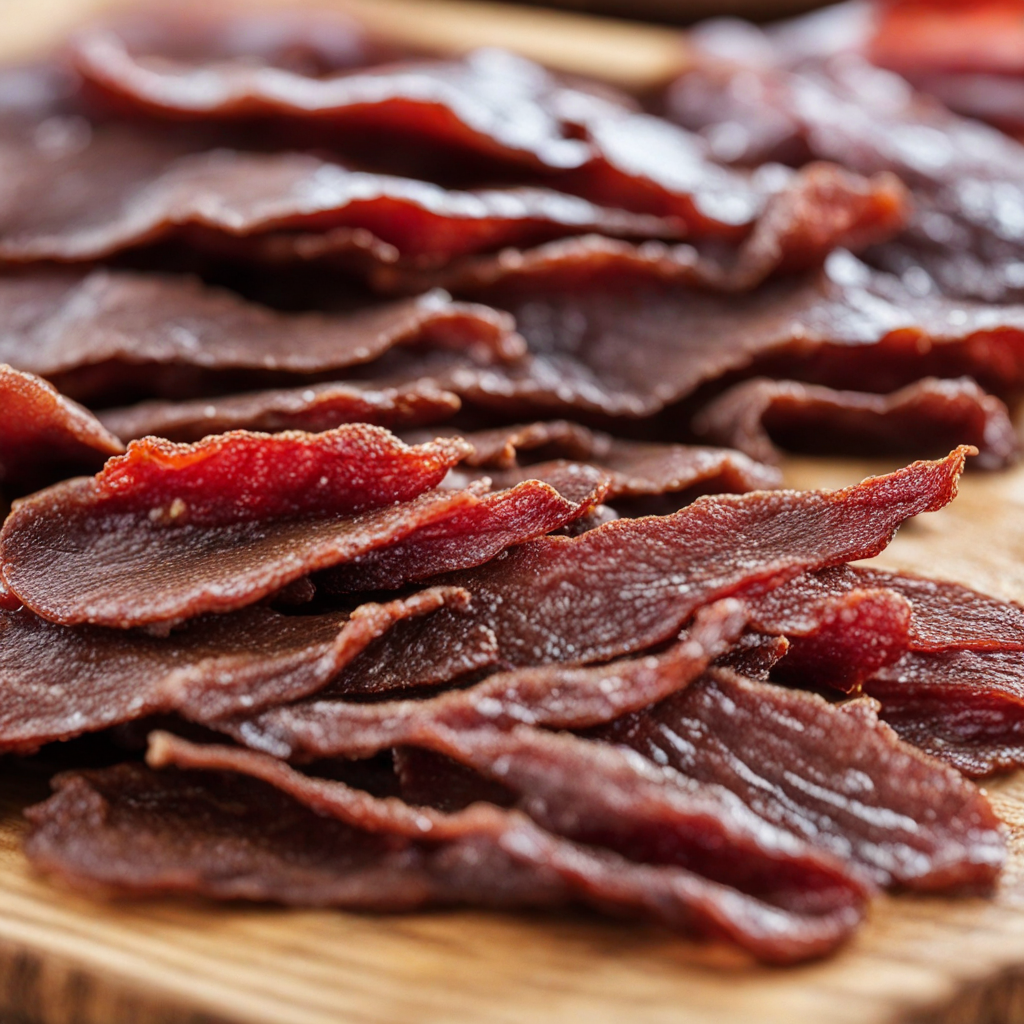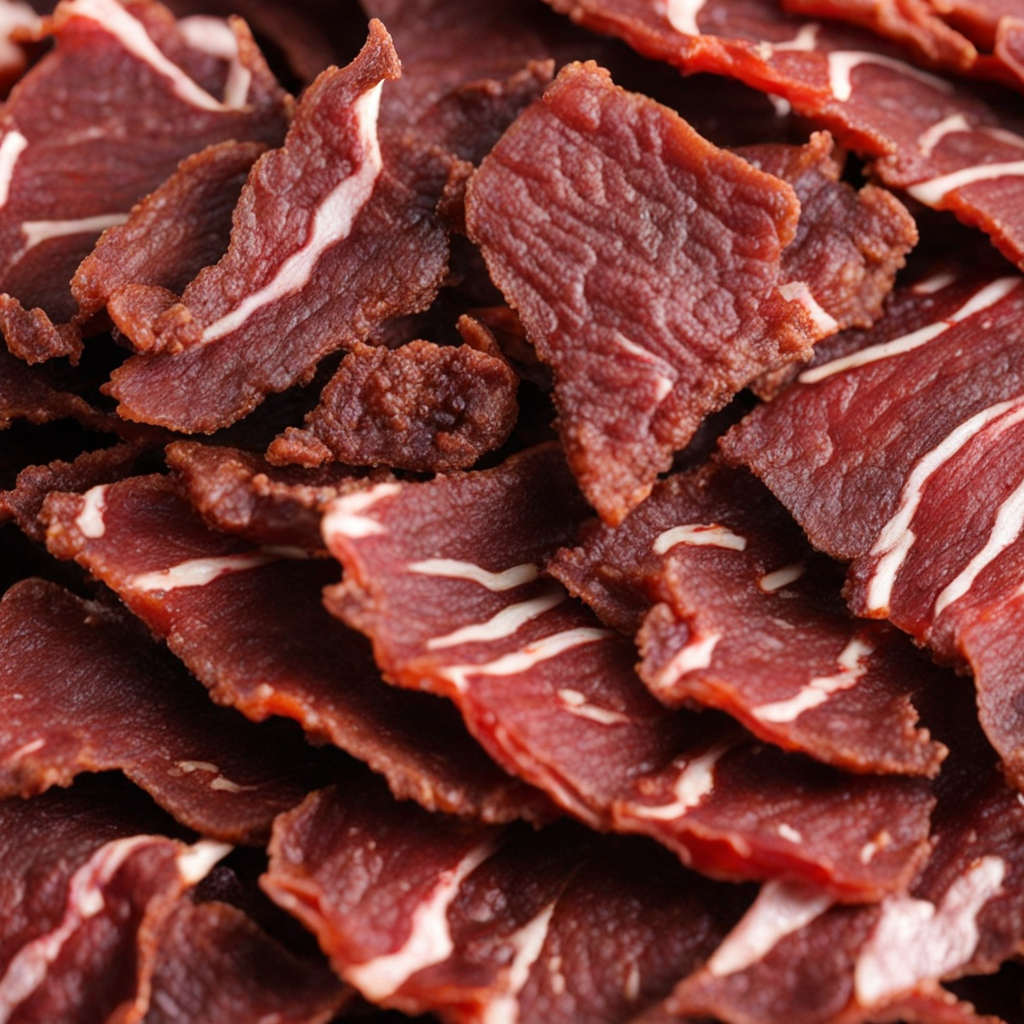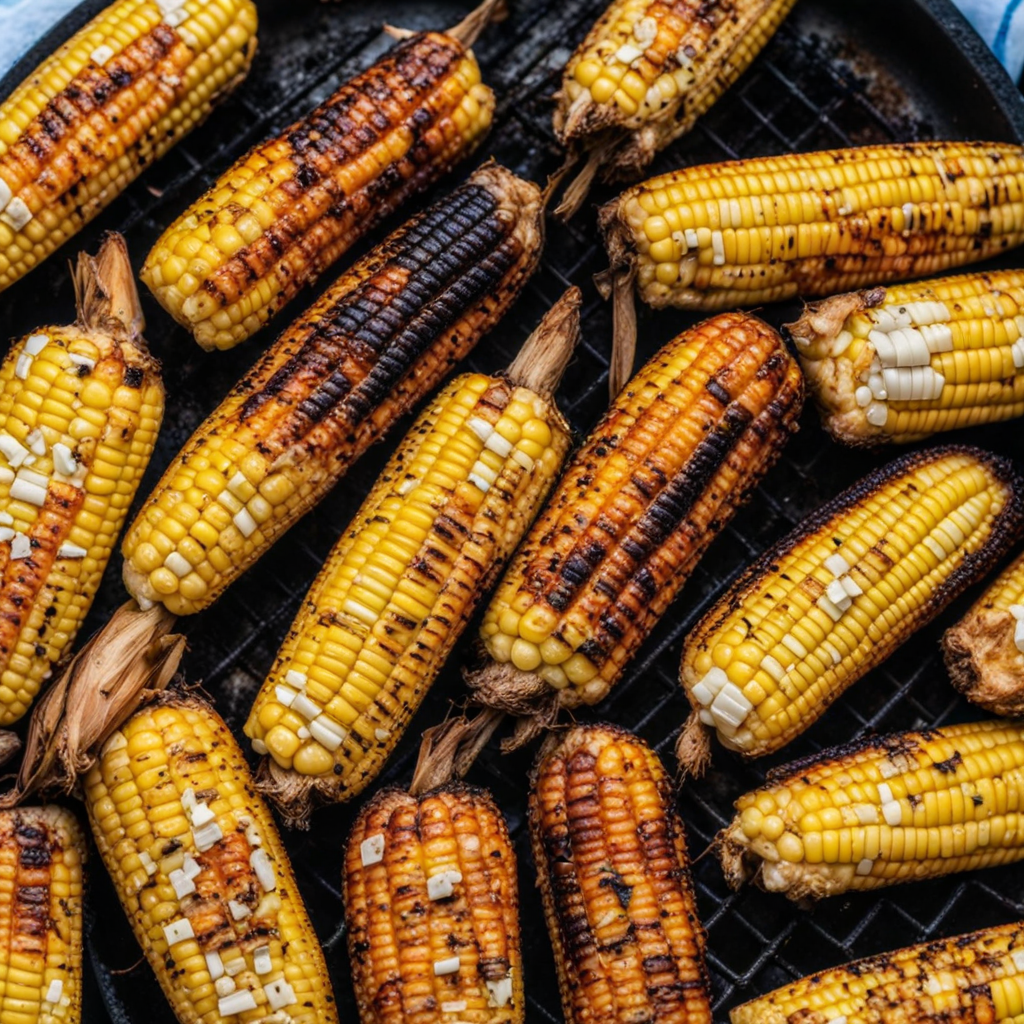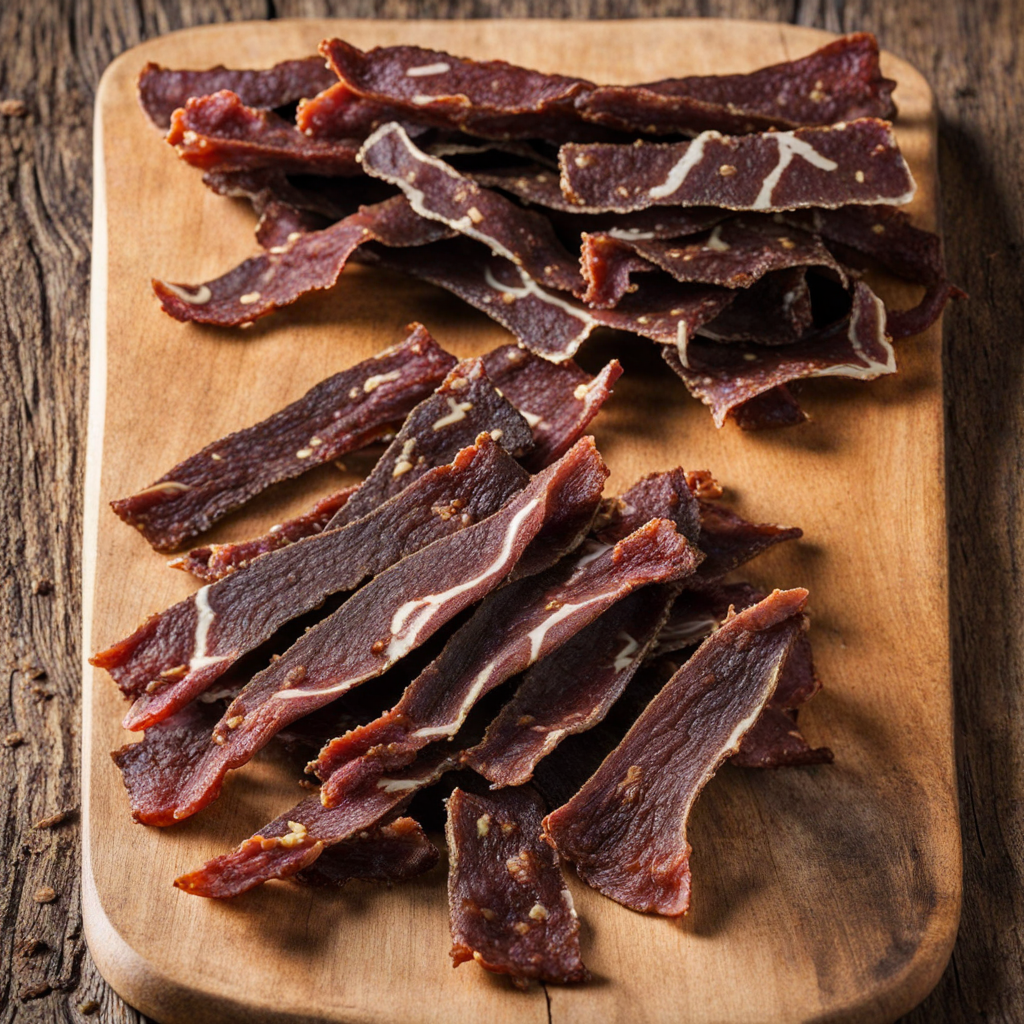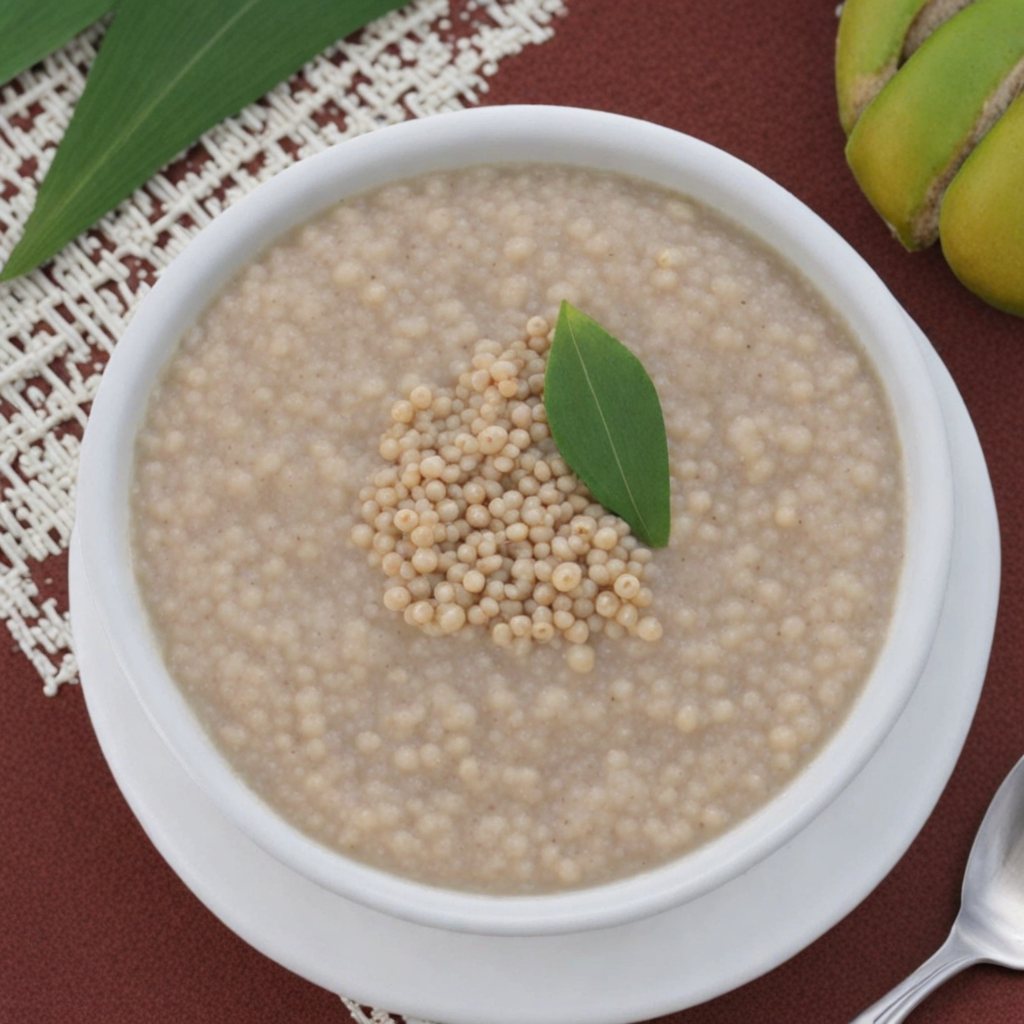Beef Jerky
Beef jerky from Eswatini is a delightful culinary experience that showcases the rich flavors and textures of the region's beef. This traditional snack is made from high-quality, grass-fed cattle that are raised in the lush pastures of Eswatini. The beef is carefully selected, sliced into thin strips, and marinated in a blend of spices that may include garlic, paprika, and a hint of chili for a mild kick. The marination process allows the flavors to penetrate deep into the meat, ensuring that every bite is a burst of savory goodness. Once marinated, the beef strips are either air-dried or smoked over traditional wood fires, which infuses them with a distinct smoky aroma and a chewy texture that is incredibly satisfying. The drying process not only preserves the meat but also concentrates its flavor, making Eswatini beef jerky a protein-packed snack that is perfect for on-the-go munching or as an accompaniment to your favorite beverages. The artisanal methods used in its preparation reflect a deep-rooted respect for culinary traditions and the land. What sets Eswatini beef jerky apart is its unique balance of flavors, combining smoky, sweet, and savory notes that dance on the palate. It can be enjoyed as a standalone snack or incorporated into various dishes, such as salads and wraps, adding depth and protein to your meals. With every bite, you're not just tasting beef jerky, but also experiencing a piece of Eswatini's cultural heritage, making it a must-try for any adventurous food lover.
How It Became This Dish
The Rich History of Inyama Yomisiwe: A Culinary Treasure of Eswatini Inyama yomisiwe, a traditional dish from Eswatini (formerly known as Swaziland), offers a tantalizing glimpse into the nation's culinary heritage and cultural significance. This dish, which translates to "dried meat," is not merely a food item; it represents centuries of tradition, communal values, and the resourcefulness of the Swazi people. To understand the depth of Inyama yomisiwe, we must explore its origins, cultural significance, and how it has evolved over time. #### Origins of Inyama Yomisiwe The earliest forms of meat preservation can be traced back to ancient civilizations, where people utilized various methods to extend the shelf life of their food. In Eswatini, the practice of drying meat likely began centuries ago, when nomadic tribes roamed the region and relied on the availability of game. Hunting was not just a means of survival; it was an integral aspect of the Swazi culture, symbolizing strength and bravery. The traditional method of preparing Inyama yomisiwe involves curing the meat, typically beef or game, with salt before it is air-dried in the sun. This technique not only enhances the flavor but also prevents spoilage, making it an essential food source during droughts or periods of scarcity. The preservation of meat in this manner allowed the Swazi people to store food for long periods, ensuring that they could sustain their families throughout the year. #### Cultural Significance Inyama yomisiwe holds a prominent place in Swazi society, serving as a symbol of hospitality and community bonding. Sharing food has always been a crucial aspect of Swazi culture, and offering Inyama yomisiwe to guests signifies respect and generosity. It is often served during communal gatherings, celebrations, and traditional ceremonies, reinforcing social ties and fostering a sense of belonging among community members. The preparation and consumption of Inyama yomisiwe also play a role in cultural rituals and ceremonies. During events such as weddings, funerals, and initiation rites, dried meat is an essential dish, reflecting the rich culinary traditions passed down through generations. The act of preparing and sharing this dish brings families together, allowing them to honor their ancestors while celebrating their cultural identity. Moreover, Inyama yomisiwe is often accompanied by traditional side dishes such as pap (a maize porridge) or vegetables, creating a well-rounded meal that showcases the agricultural practices of the Swazi people. The integration of locally sourced ingredients reflects the deep connection between the Swazi people and their land, emphasizing sustainability and resourcefulness. #### Development Over Time As Eswatini navigated the complexities of colonialism and modernization, the preparation and consumption of Inyama yomisiwe adapted to the changing landscape. The British colonial administration in the late 19th and early 20th centuries introduced new agricultural practices and livestock management techniques, which influenced the types of meat available for drying and consumption. This period saw the introduction of cattle ranching, which increased the availability of beef and allowed for the development of more standardized methods of preparing Inyama yomisiwe. In the post-colonial era, as Eswatini gained independence in 1968, there was a renewed interest in preserving traditional culinary practices. The Swazi people began to embrace their heritage more openly, leading to a revival of traditional dishes like Inyama yomisiwe. This resurgence was not just about food; it was a cultural renaissance that sought to reclaim identity and pride in Swazi traditions. The globalization of food culture has also impacted Inyama yomisiwe. With the rise of social media and the internet, traditional recipes have gained visibility beyond the borders of Eswatini. Chefs and food enthusiasts worldwide have begun to explore and appreciate the depth of Swazi cuisine, leading to a fusion of traditional and modern culinary practices. While this has introduced new flavors and techniques, the essence of Inyama yomisiwe remains intact, serving as a bridge between the past and the present. Today, Inyama yomisiwe is enjoyed both in rural and urban areas of Eswatini. It can be found in local markets, restaurants, and even on international menus, showcasing the versatility of this beloved dish. The traditional methods of preparation are still honored, with many families passing down their unique recipes and techniques to the next generation. This continuity reflects the enduring nature of Swazi culture and the importance of food in maintaining cultural identity. #### Conclusion Inyama yomisiwe is more than just a dried meat dish; it is a testament to the resilience, creativity, and communal spirit of the Swazi people. From its origins as a practical solution for food preservation to its role as a symbol of hospitality and cultural identity, Inyama yomisiwe encapsulates the essence of Eswatini's culinary heritage. As the world continues to evolve, this traditional dish serves as a reminder of the importance of preserving cultural practices and honoring the past while embracing the future. In a rapidly changing world, Inyama yomisiwe stands as a delicious bridge to the heritage of Eswatini, inviting everyone to partake in its rich, flavorful history.
You may like
Discover local flavors from Eswatini


